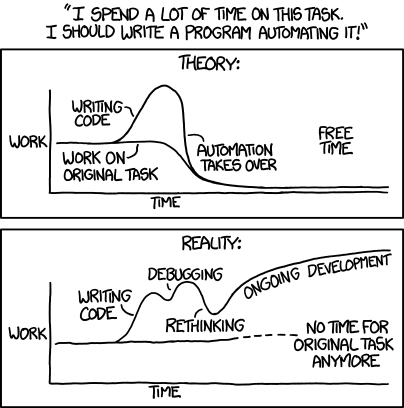The little shortcut for virtualenv
Project description
vnv
vnv is a little shortcut for virtualenv that tries to stay out of your
way.
No more typing out . /path/to/env/bin/activate, now it's just
vnv env.
Quickstart
Install. Then run:
vnv -new my-venv
vnv my-venv
Bam. Now you're in a brand new virtualenv named "my-venv". It's cached right now, so you can toggle it off and on with just:
vnv
But what about your old virtualenvs? If you keep them all in a folder or two somewhere, just tell vnv where they are and you can activate them by name anywhere on your system:
$ vnv -path -add /old-envs
$ cd anywhere
$ vnv my-old-env
(my-old-env) $
If not, you can always activate them by path:
$ vnv /path/to/a-venv
(a-venv) $
Features
Simple env toggling & caching
Shown above, vnv offers a shortcut for activating and deactivating
virtualenv environments.
Activating an env caches it for the current shell session, stored in
$VNV_CACHE.
Internal envs
Instead of requiring you to have your own folder for virtualenvs, vnv
will keep one for you.
It's located at ~/.vnv/envs and it's the default place for vnv to
create new envs.
Installed envs: the "vnv path"
vnv looks for envs not just in the internal envs folder, but in any
folders you choose.
Together they make up the "vnv path", with the custom folders listed,
newline-separated, in ~/.vnv/path.txt.
$ vnv -path -add ~/Envs
$ vnv -path
0. /home/gram/.vnv/envs (internal)
1. /home/gram/Envs
$ vnv -which venv1
/home/gram/Envs/venv1
An env is "installed" if it is in a folder on the vnv path.
Activate by name, activate by path
When given a name like my-venv, vnv will only look for it on the vnv
path.
To specify that "my-venv" is in the current directory, use the path
./my-venv instead.
Shortcut, not a wrapper
Everything vnv does is just a shortcut to the default virtualenv behavior. This way, everything you make with it will still work even if you ditch vnv.
There are fancier tools out there for managing virtualenvs. Try virtualenvwrapper or pew for the wrapper experience.
Other features
- Cross-platform, cross-shell
- Multiple vnv path directories
- Single 3-character command for everything
- Create envs with
$ vnv -new, forwarding additional args to virtualenv - Manage envs with
$ vnv -list,$ vnv -which,$ vnv -del - Manage the vnv path with
$ vnv -path - Shortcut names:
$ vnv mcan activatemy-venv - Supports
activate_this.pywithimport vnv; vnv.activate('my-venv') - Tries to be useful for scripting
Installation
Use pip:
pip install vnv
Make sure to install vnv on your base Python installation, not in a virtual environment. You'll need access to it inside and outside of envs.
vnv supports all 7 activators virtualenv supports, meaning it works with bash/zsh/ksh, cmd.exe, csh, fish, PowerShell, xonsh, and the Python interpreter itself.
If you use one of those that ends in "sh", you'll also need to load the
corresponding wrapper script in your startup file.
For example, bash requires the line . vnv-startup in ~/.bashrc.
Instructions included.
Some more ideas
If you want to have a default env, you could pre-set VNV_CACHE to its
location when your shell starts.
Use your startup file (or the environment variables on Windows).
If you want to activate envs in the current directory by name, add .
to the vnv path with $ vnv -path -add -r ..
vnv path folders don't have to only contain virtualenvs. If you keep an env alongside other stuff in a project folder, it's fine to add the whole project folder to the vnv path.
Credits
vnv is made by me, Gramkraxor. It's in the public domain, so it's yours to tinker with.
Project details
Release history Release notifications | RSS feed
Download files
Download the file for your platform. If you're not sure which to choose, learn more about installing packages.













